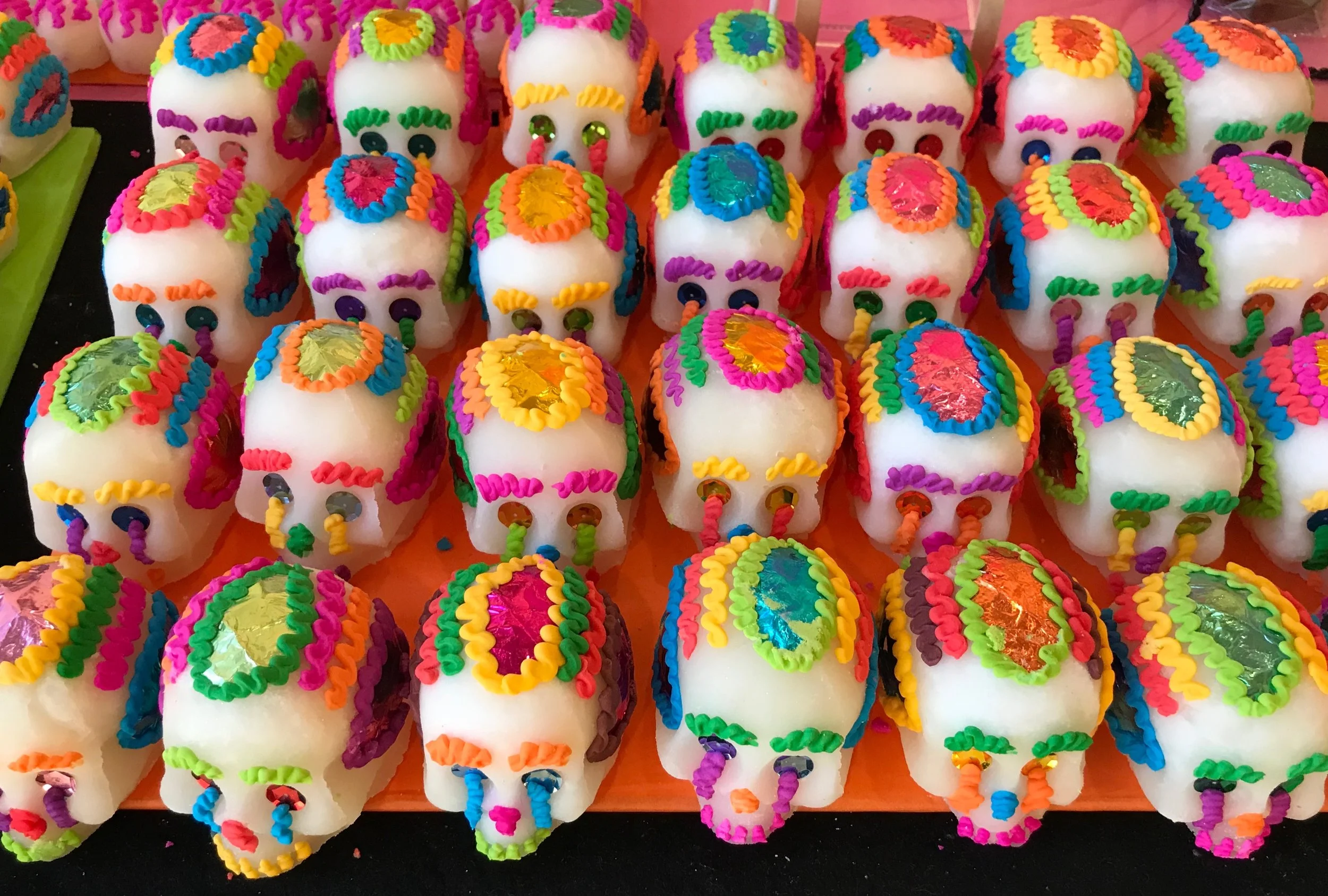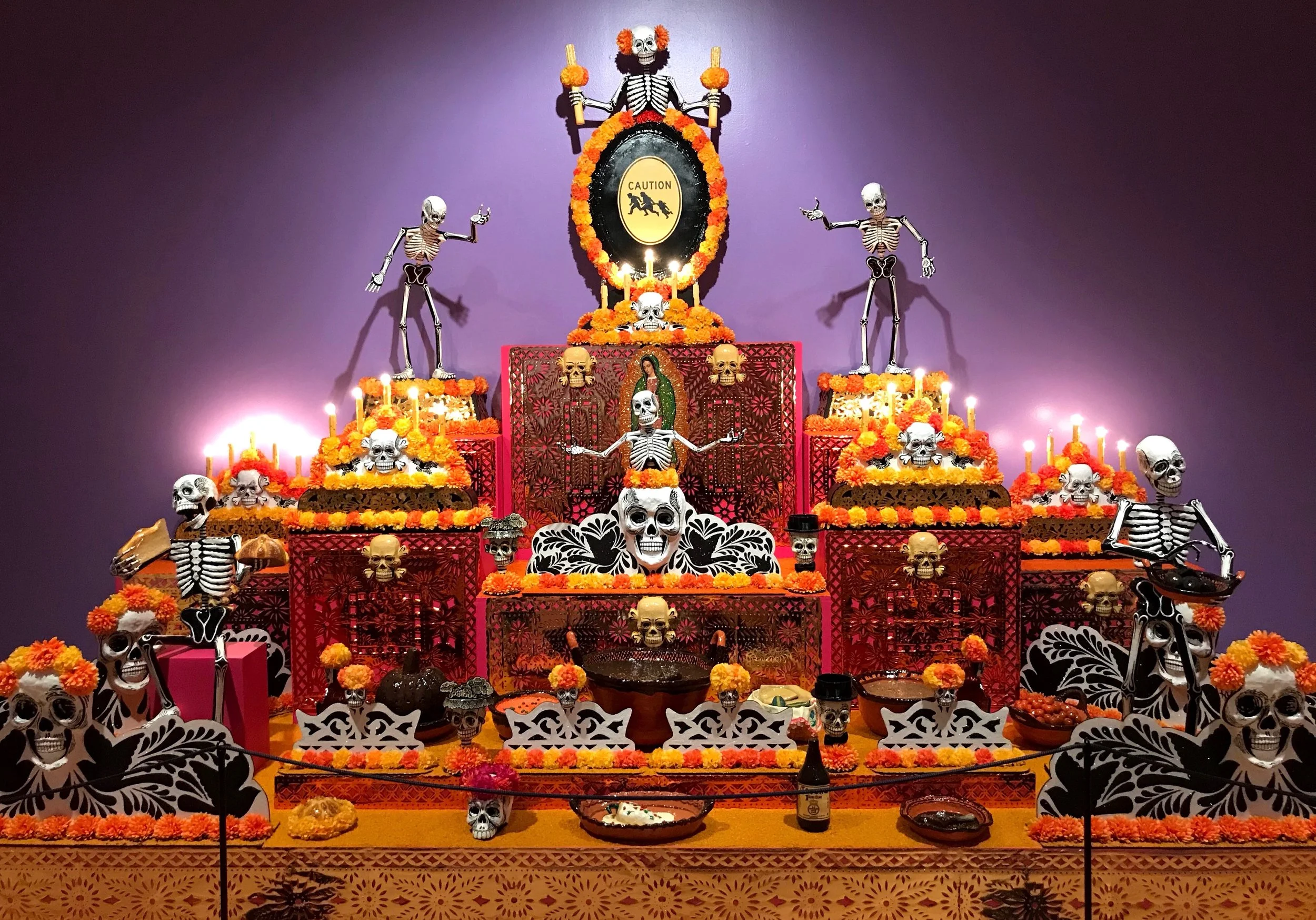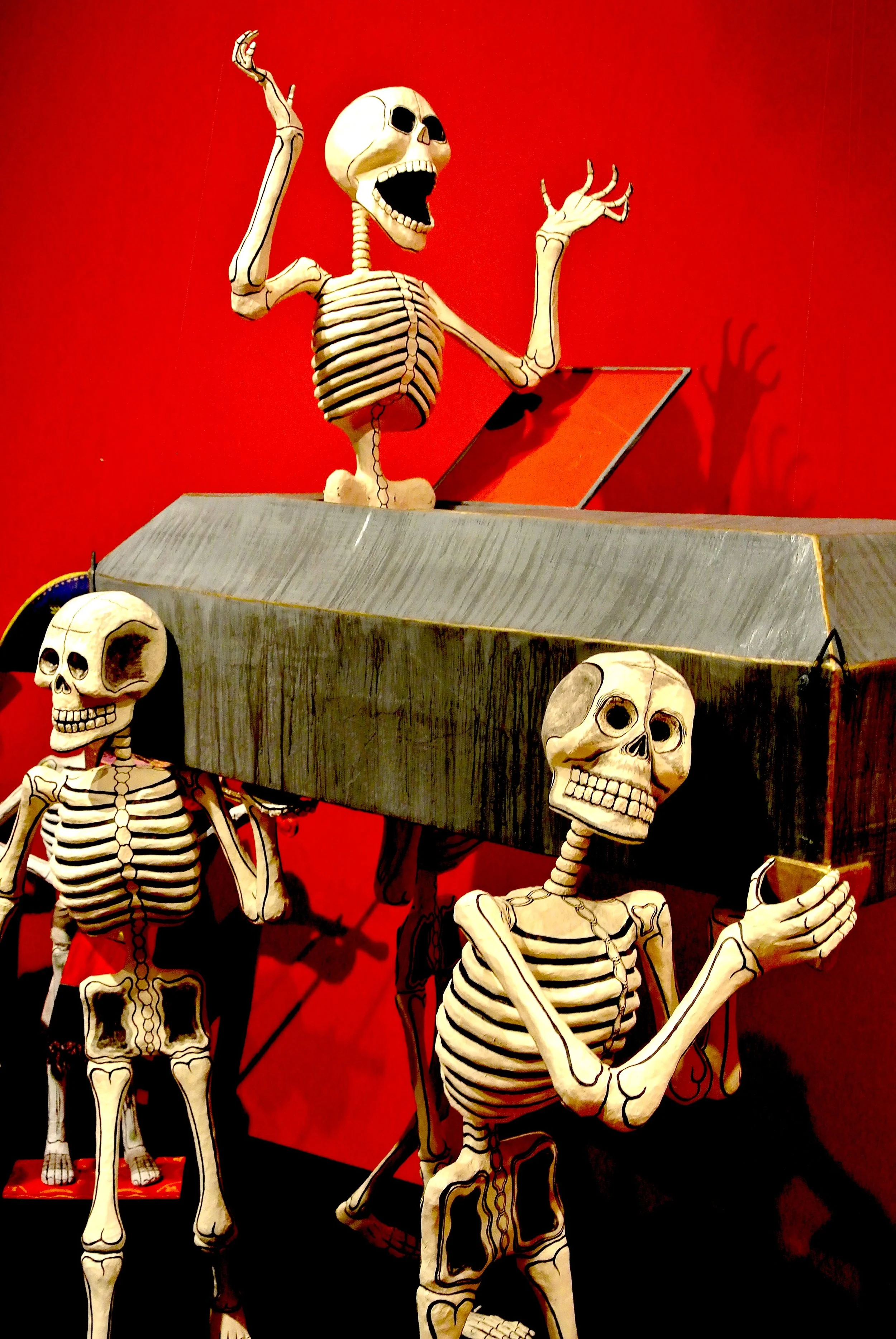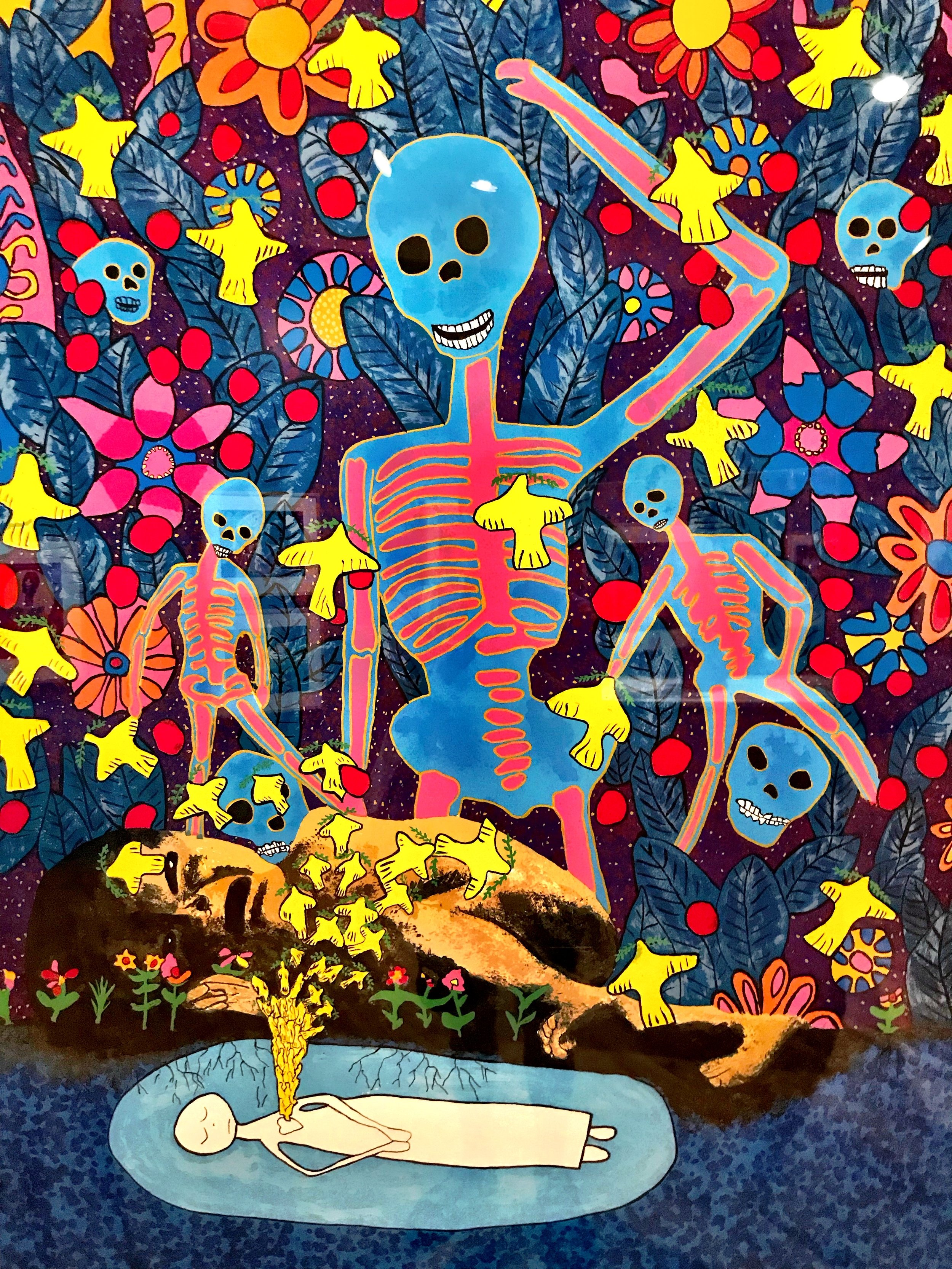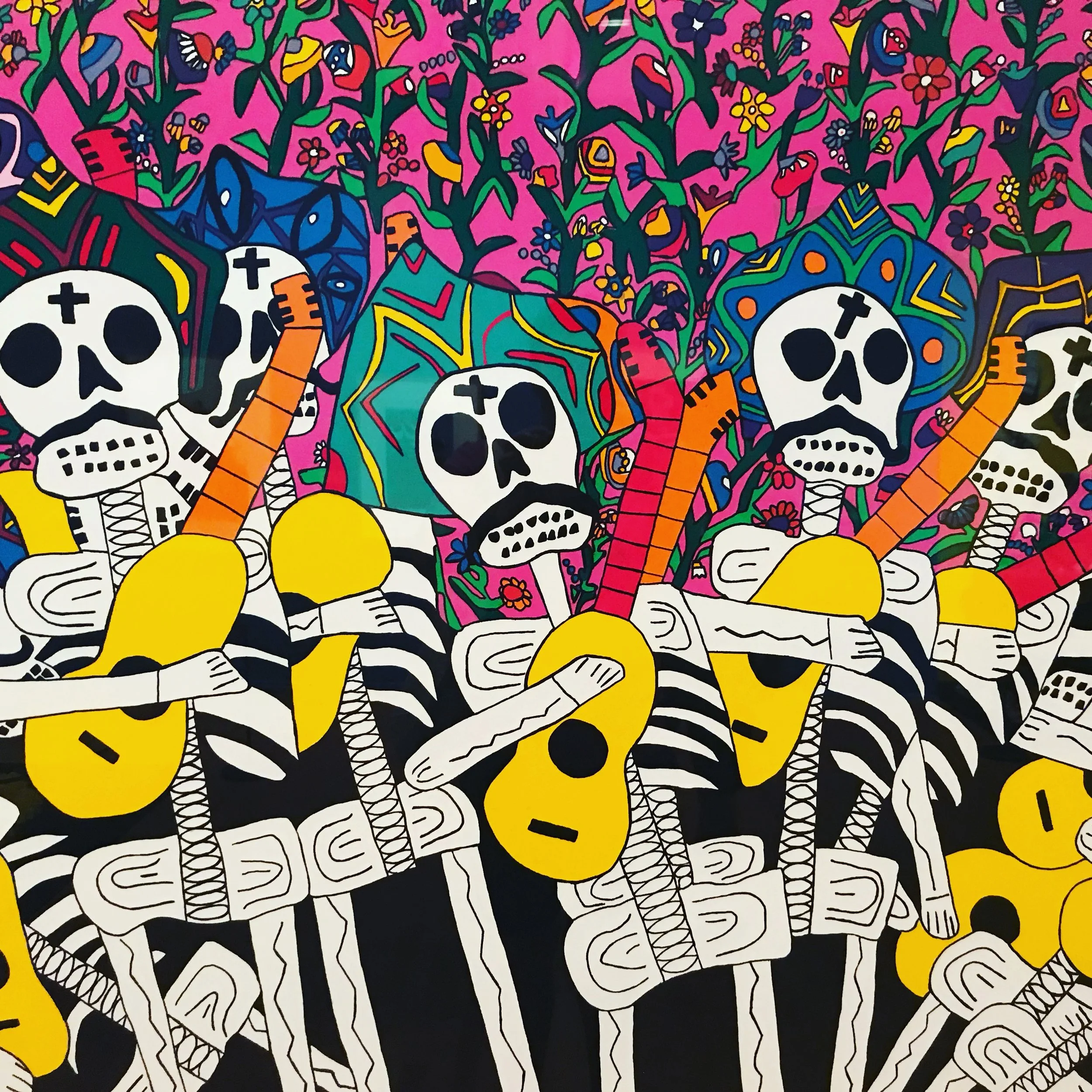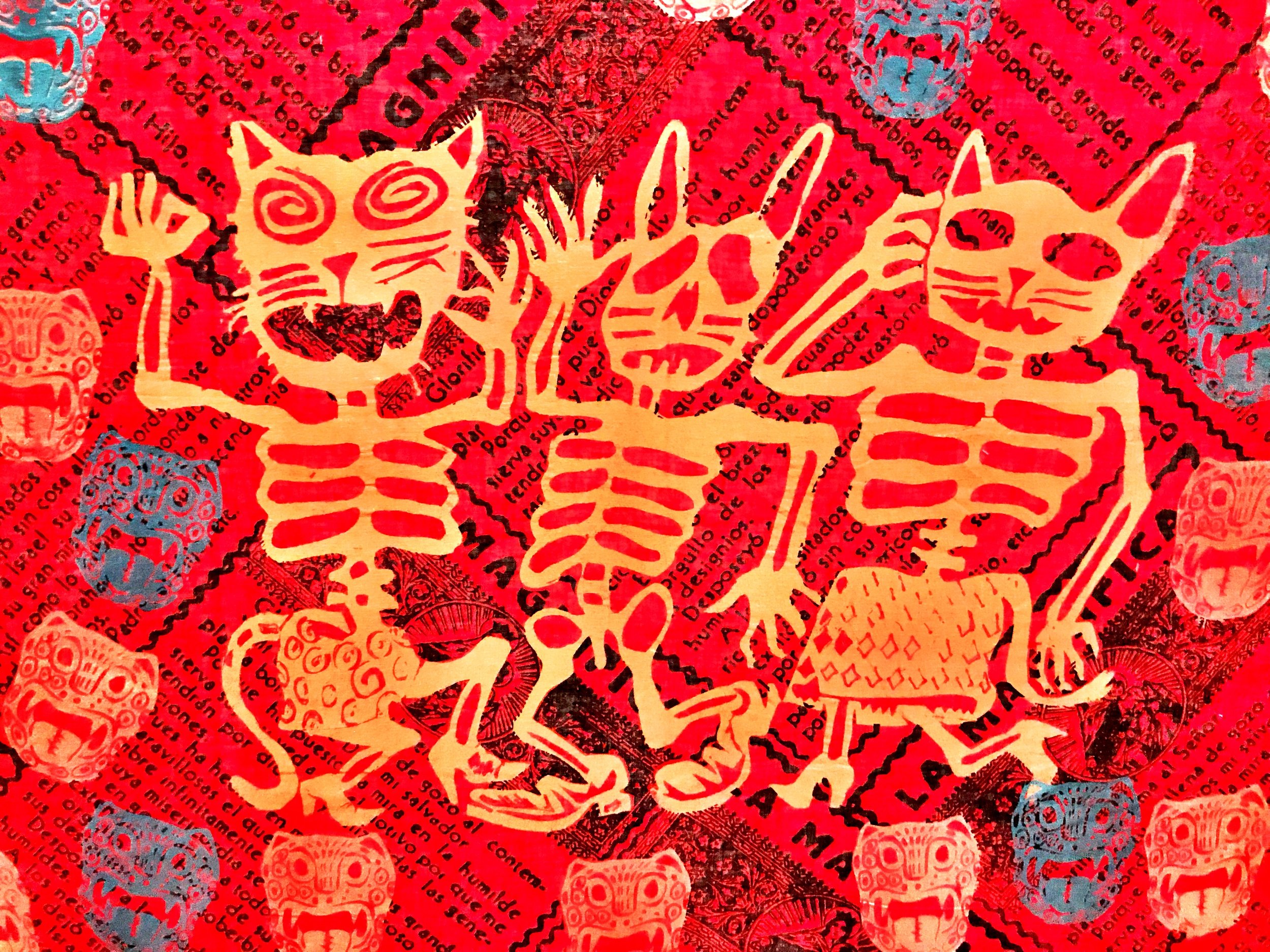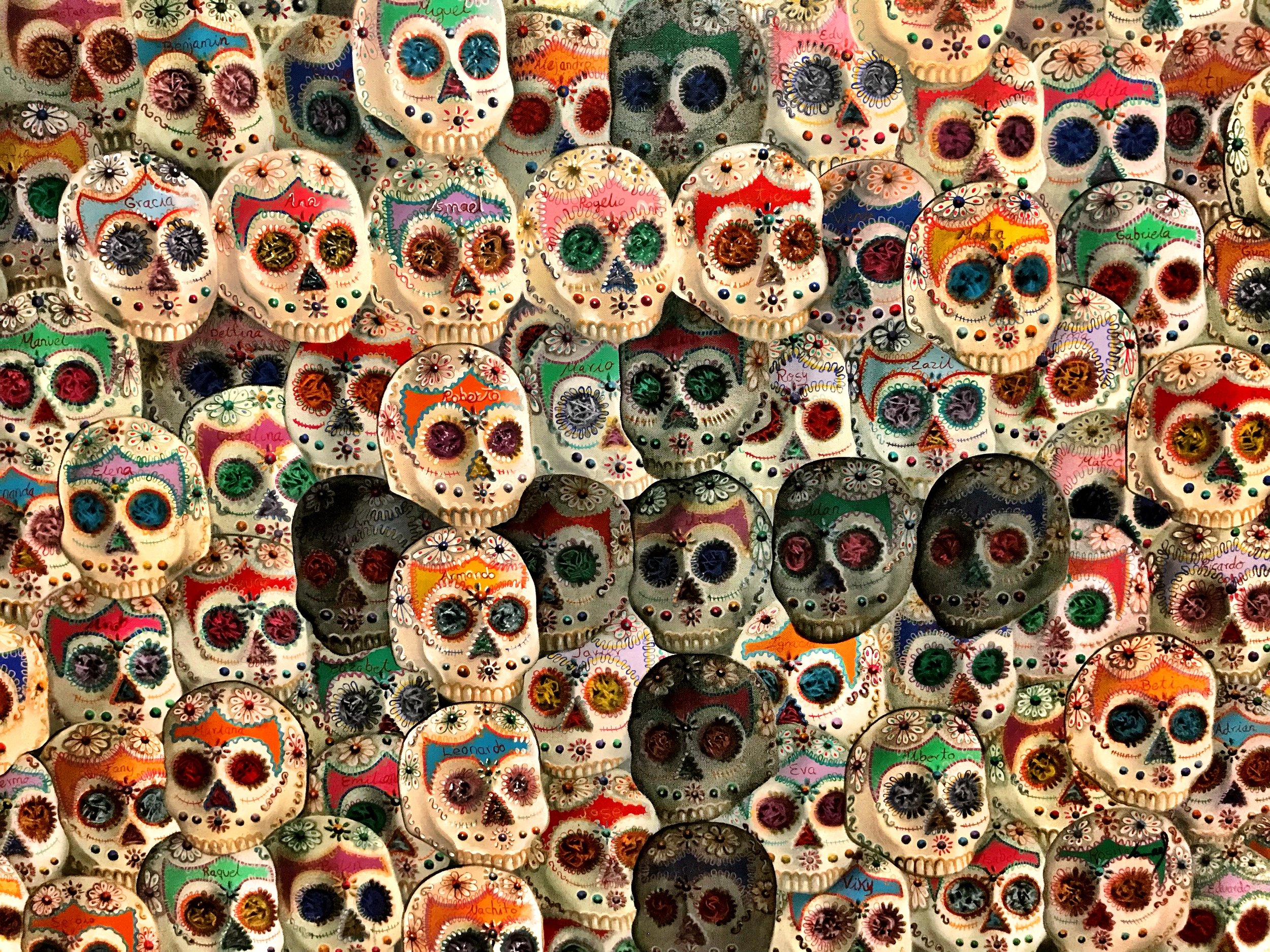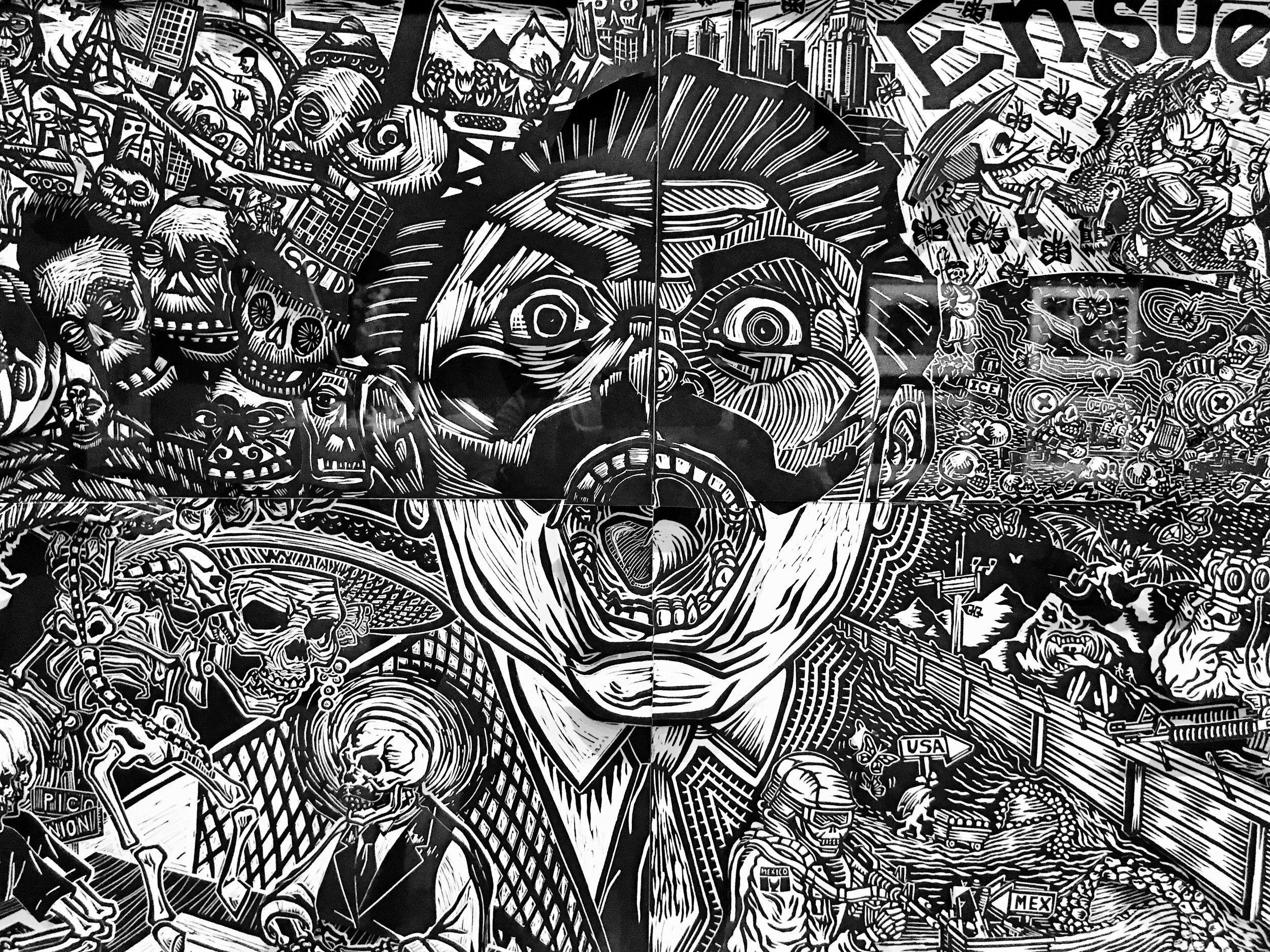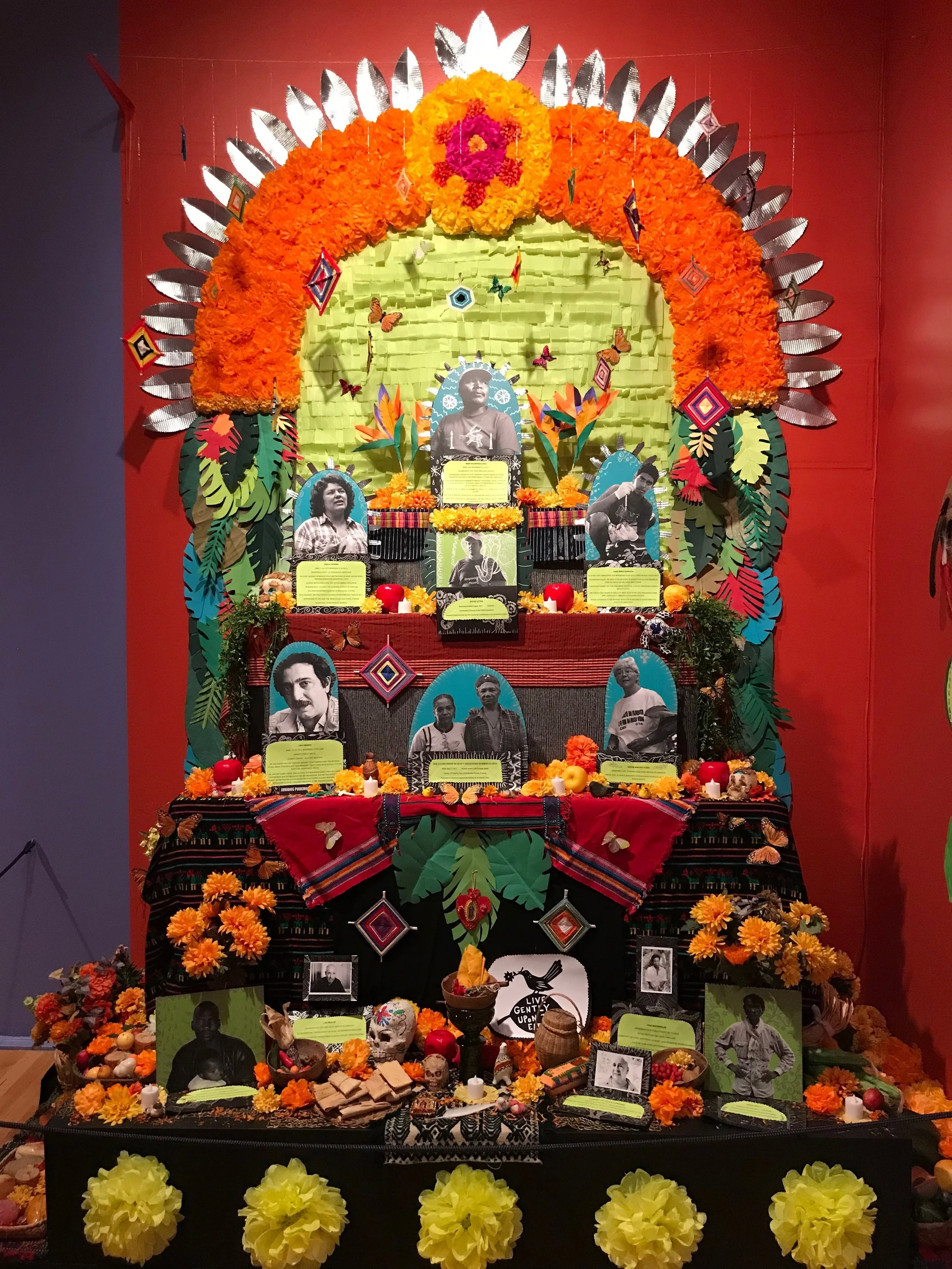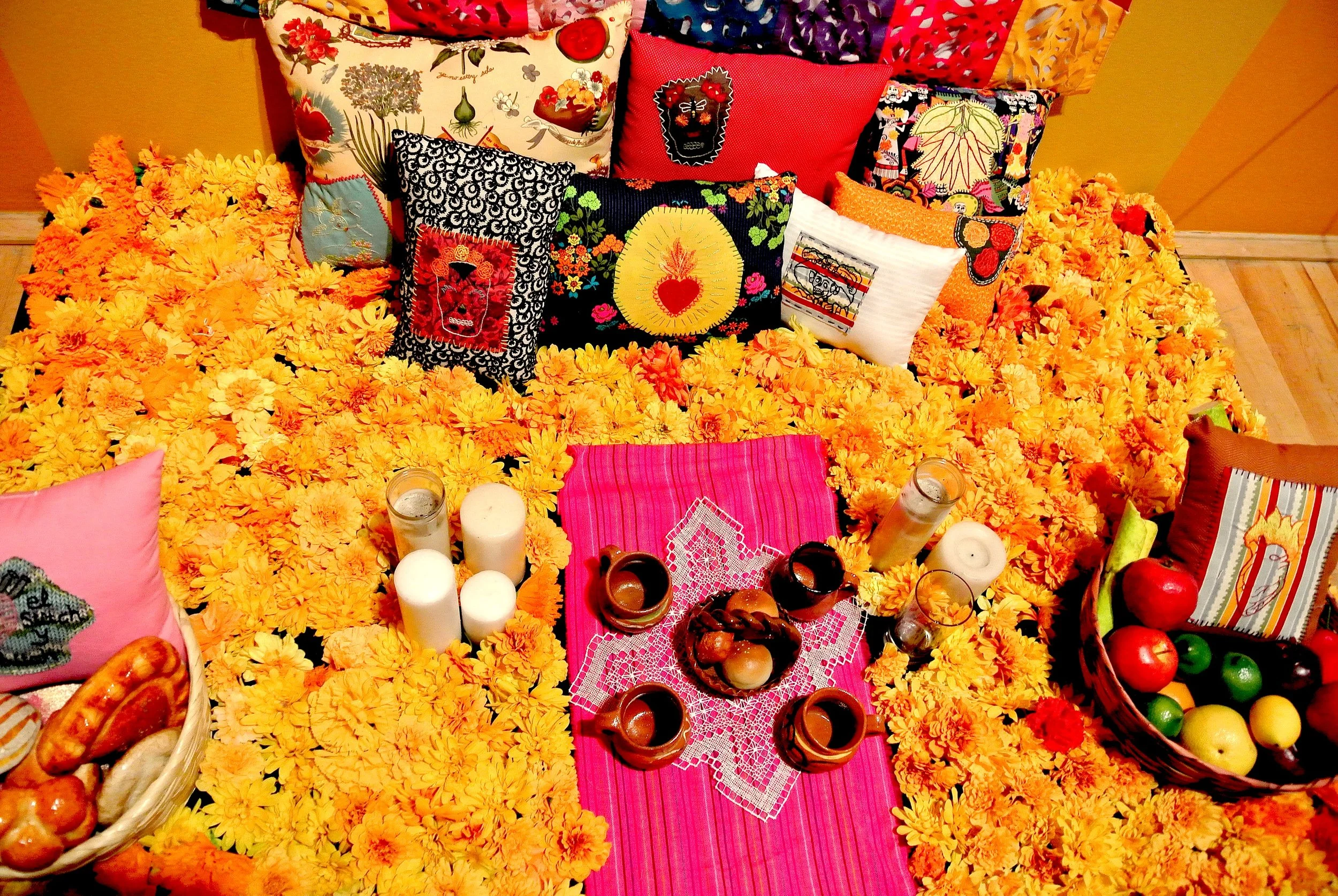Don’t be scared of Día de los Muertos! With sugar skulls and homemade altars, it’s an exuberant celebration to honor those who have died.
Every year Duke and Wally head to the National Museum of Mexican Art in Chicago to see its Day of the Dead exhibit
To an outsider, it can seem a bit odd. I remember the first time I saw the representations of skeletons dressed up in outlandish clothes as part of the Mexican tradition of Día de los Muertos, or the Day of the Dead. It seemed as if people were mocking death — and, in a way, that’s exactly what they’re doing. By laughing at death, it takes away some of its power; death becomes something you fear a little bit less.
“You might leave out toys for little ones who have died — or booze and cigarettes for adults who indulged during their lives.”
What are the origins of the Day of the Dead?
The Aztecs honored their ancestors, particularly at the monthlong festival for Mictecacihuatl, the Lady of the Dead, So there’s part of that tradition kept alive by the Aztecs’ descendants. But the holiday is also affiliated with the Catholic holy days, All Saints’ Day on November 1 and All Souls’ Day on November 2, first brought over by the Spanish conquistadors. (Halloween’s name derives from All Hallow’s Eve, meaning it’s the night before All Hallows’, or All Saints’ Day.)
Día de los Muertos became a way to celebrate with your loved ones — even those who have passed on.
Surprise! Fall is the time of the year when the dead are said to come back to visit this world
Is the Day of the Dead a scary time?
Don’t let its potentially frightening name fool you. Unlike Halloween, when people love to play up the spooky (hands reaching out from graves, evil clowns, fake blood, giant spiders, ghosts), the Day of the Dead is actually a joyful holiday.
In many parts of the world, this is the time of year when people honor those who have died, and the veil between the world of the living and the dead is said to be at its thinnest.
What about all those skulls and skeletons?
Skulls and skeletons are everywhere during the Day of the Dead. Artwork and food depict them, including skull-shaped bread (pan de muerto) and sugar skulls that you inscribe with the name of someone who has died. People will do elaborate Day of the Dead makeup to give the illusion that they’re skeletons.
Duke went as a Day of the Dead skeleton recently for Halloween
Why did these icons become so prolific? It traces back to the pre-Hispanic era, when skulls were kept as trophies and used during rituals, according to HuffPost.
Families make altars for their loved ones who have died, decorating them with photos and offering treats
The fun bright orange marigolds are common decorations during el Día de los Muertos
How is the Day of the Dead celebrated?
Families will set up altars, or ofrendas, in their homes to honor those who have died. A photo of the dead person, candles, bright orange marigolds and colorful paper banners are popular. Family members put out the favorite food and drinks of the deceased, along with various items that they loved in life (a musical instrument or book, for instance). You might leave out toys for little ones who have died (angelitos) — or booze and cigarettes for adults who indulged during their lives.
This ofrenda at the National Museum of Mexican Art was created by a graphic novelist, Raúl the Third
Another stylized altar for the Day of the Dead exhibit in Chicago
What’s this about a party in the graveyard?!
That’s right. Mexican families will camp out at their loved ones’ graves and have a huge feast. That probably sounds creepy to a lot of you — but they’re just including those who have passed away to join the party. They’ll sing songs, talk to the dead and introduce them to new family members. It’s also a good time to clean their loved ones’ tombstones.
In some villages, people will leave a trail of marigolds from the deceased’s grave back to their home, so the dead can join them there.
These sugar skulls were crafted by the Mondragón family in Mexico, a specialty they’ve worked on for generations. The name of the deceased is written on the forehead of the skull
There are some lovely Day of the Dead practices that could become a part of your family’s Halloween traditions. Duke and I have started collecting sugar skulls, and we’ve always loved the skeleton artwork.
¡Feliz Día de los Muertos! –Wally
“Mexican families camp out at their loved ones’ graves and have a huge feast. That probably sounds creepy to a lot of you — but they’re just including those who have passed away to join the party. ”
